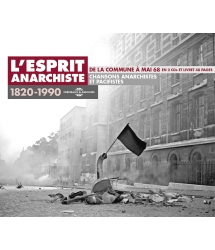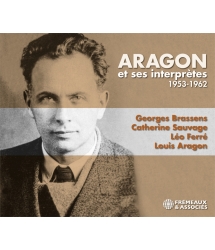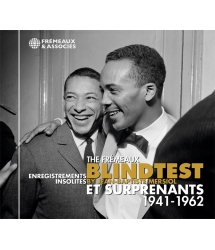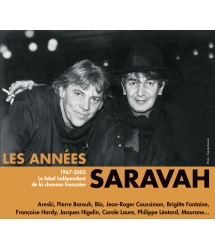- Our Catalog
- Philosophy
- Philosophers of the 20th century and today
- History of Philosophy (PUF)
- Counter-History and Brief Encyclopedia by Michel Onfray
- The philosophical work explained by Luc Ferry
- Ancient thought
- Thinkers of yesterday as seen by the philosophers of today
- Historical philosophical texts interpreted by great actors
- History
- Books (in French)
- Social science
- Historical words
- Audiobooks & Literature
- Our Catalog
- Jazz
- Blues
- Rock - Country - Cajun
- French song
- World music
- Africa
- France
- Québec / Canada
- Hawaï
- West Indies
- Caribbean
- Cuba & Afro-cubain
- Mexico
- South America
- Tango
- Brazil
- Tzigane / Gypsy
- Fado / Portugal
- Flamenco / Spain
- Yiddish / Israel
- China
- Tibet / Nepal
- Asia
- Indian Ocean / Madagascar
- Japan
- Indonesia
- Oceania
- India
- Bangladesh
- USSR / Communist songs
- World music / Miscellaneous
- Classical music
- Composers - Movie Soundtracks
- Sounds of nature
- Our Catalog
- Youth
- Philosophy
- News
- How to order ?
- Receive the catalog
- Manifesto
- Dictionnary











- Our Catalog
- Philosophy
- Philosophers of the 20th century and today
- History of Philosophy (PUF)
- Counter-History and Brief Encyclopedia by Michel Onfray
- The philosophical work explained by Luc Ferry
- Ancient thought
- Thinkers of yesterday as seen by the philosophers of today
- Historical philosophical texts interpreted by great actors
- History
- Books (in French)
- Social science
- Historical words
- Audiobooks & Literature
- Our Catalog
- Jazz
- Blues
- Rock - Country - Cajun
- French song
- World music
- Africa
- France
- Québec / Canada
- Hawaï
- West Indies
- Caribbean
- Cuba & Afro-cubain
- Mexico
- South America
- Tango
- Brazil
- Tzigane / Gypsy
- Fado / Portugal
- Flamenco / Spain
- Yiddish / Israel
- China
- Tibet / Nepal
- Asia
- Indian Ocean / Madagascar
- Japan
- Indonesia
- Oceania
- India
- Bangladesh
- USSR / Communist songs
- World music / Miscellaneous
- Classical music
- Composers - Movie Soundtracks
- Sounds of nature
- Our Catalog
- Youth
- Philosophy
- News
- How to order ?
- Receive the catalog
- Manifesto
- Dictionnary
CHANSONS ET BALLET
Ref.: FA5433
EAN : 3561302543321
Artistic Direction : OLIVIER JULIEN
Label : Frémeaux & Associés
Total duration of the pack : 2 hours 21 minutes
Nbre. CD : 2
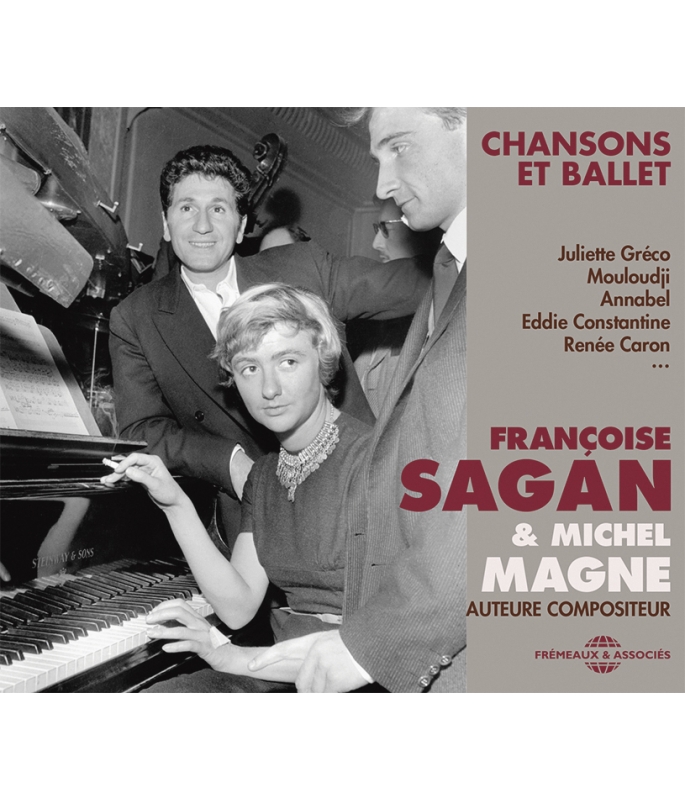
CHANSONS ET BALLET
CHANSONS ET BALLET
With a carefree lust for life and pleasure matched only by her talent, Françoise Sagan was a writer with a demonic reputation. She was one of the greatest French authors of the 20th century — she wrote “Bonjour tristesse” — yet her contributions to music remain little-known. Olivier Julien has written a fullydocumented 28-page booklet for this set detailing her artistic collaboration in 1950/1960 with the gifted arranger and film-music composer Michel Magne. CD1 presents songs performed by the duo’s entourage featuring Juliette Greco, Mouloudji, Annabel, or Sagan herself; and CD2 is an opportunity to (re)discover “Le rendez-vous manqué”, a striking ballet with a libretto by Sagan whose music lies between jazz, rumbas and great instrumentals, presented here for the first time on CD. Patrick FRÉMEAUX
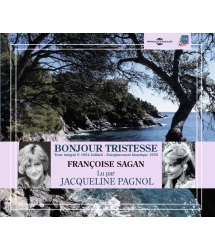
Lu par JACQUELINE PAGNOL
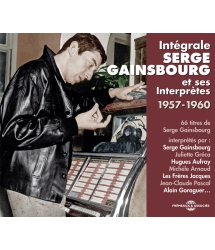
INTÉGRALE SERGE GAINSBOURG ET SES INTERPRÈTES...
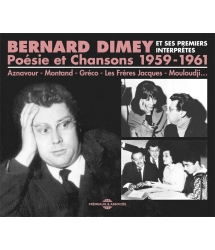
POÉSIE ET CHANSONS 1959-1961



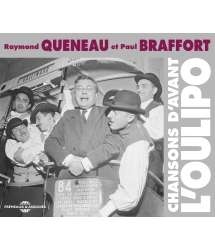

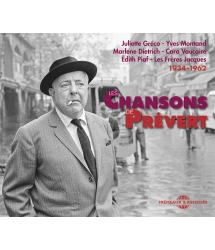
-
PisteTitleMain artistAutorDurationRegistered in
-
1Sans vous aimerRené CaronFrançoise Sagan00:03:241956
-
2Sans vous aimerJuliette GrécoFrançoise Sagan00:03:561956
-
3Le jourJuliette GrécoFrançoise Sagan00:03:291956
-
4La valseJuliette GrécoFrançoise Sagan00:04:101956
-
5Les jours perdusJuliette GrécoFrançoise Sagan00:03:121957
-
6Vous, mon coeurMouloudjiFrançoise Sagan00:03:141956
-
7En dormantMouloudjiFrançoise Sagan00:03:181957
-
8Ciel et terreMouloudjiFrançoise Sagan00:03:321957
-
9Va vivre ta vieMouloudjiFrançoise Sagan00:02:511957
-
10La valseEddie ConstantineFrançoise Sagan00:03:091956
-
11Vous mon coeurEddie ConstantineFrançoise Sagan00:02:271956
-
12La valseAnnabelFrançoise Sagan00:03:281956
-
13Les jours perdusAnnabelFrançoise Sagan00:03:041956
-
14Pour toi et moiAnnabelFrançoise Sagan00:02:481956
-
15Le jourAnnabelFrançoise Sagan00:03:311956
-
16La valseFrançoise SaganFrançoise Sagan00:03:291957
-
17Les jours perdusFrançoise SaganFrançoise Sagan00:03:051957
-
18Pour toi et moiFrançoise SaganFrançoise Sagan00:02:481957
-
19Le jourFrançoise SaganFrançoise Sagan00:03:301957
-
20Good-bye againDiahann CarollFrançoise Sagan00:02:001961
-
21Quand tu dors près de moiDalidaFrançoise Sagan00:02:031961
-
22Bonjour tristesseJuliette GrécoJacques Datin00:03:231958
-
23Quand tu dors près de moiAnthony PerkinsFrançoise Sagan00:02:071962
-
PisteTitleMain artistAutorDurationRegistered in
-
1Danse des flammesMichel MagneFrançoise Sagan00:01:231958
-
2Danse de l'impatienceMichel MagneFrançoise Sagan00:01:291958
-
3Danse des aiguillesMichel MagneFrançoise Sagan00:01:451958
-
4Danse du désirMichel MagneFrançoise Sagan00:01:001958
-
5EntréeMichel MagneFrançoise Sagan00:02:501958
-
6Le jourMichel MagneFrançoise Sagan00:04:091958
-
7Danse du voisinMichel MagneFrançoise Sagan00:01:561958
-
8Jitterburg bluesMichel MagneFrançoise Sagan00:08:211958
-
9Ciel et terreMichel MagneFrançoise Sagan00:02:181958
-
10RêverieMichel MagneFrançoise Sagan00:04:231958
-
11Berceuse du kiosque à musiqueMichel MagneFrançoise Sagan00:01:041958
-
12Recherche dans ParisMichel MagneFrançoise Sagan00:02:511958
-
13Chez le bijoutierMichel MagneFrançoise Sagan00:01:181958
-
14Chambres d'hotel n°1 et n°2Michel MagneFrançoise Sagan00:05:141958
-
15GasMichel MagneFrançoise Sagan00:02:131958
-
16CouteauMichel MagneFrançoise Sagan00:01:231958
-
17PoisonMichel MagneFrançoise Sagan00:02:021958
-
18Final: pas de deuxMichel MagneFrançoise Sagan00:03:141958
-
19Le jourMichel MagneFrançoise Sagan00:03:521958
-
20Les jours perdusMichel MagneFrançoise Sagan00:03:261958
-
21Va vivre ta vieMichel MagneFrançoise Sagan00:03:211958
-
22Sans vous aimerMichel MagneFrançoise Sagan00:03:161958
-
23Ciel et terreMichel MagneFrançoise Sagan00:02:251958
-
24Pour toi et moiMichel MagneFrançoise Sagan00:03:581958
Françoise Sagan et Michel Magne FA5433
Chansons et ballet
FRANÇOISE SAGAN & MICHEL MAGNE
Juliette Gréco, Mouloudji, Annabel, Eddie Constantine, Renée Caron…
FRANÇOISE SAGAN & MICHEL MAGNE
chansons et ballets
Le 15 mars 1954, Françoise Sagan n’a pas dix-neuf ans lorsque paraît son premier roman, Bonjour tristesse. Le succès est immédiat et fulgurant et la jeune fille de bonne famille devient un phénomène littéraire et l’objet de toutes le attentions. Née Françoise Quoirez le 21 juin 1935 à Cajarc dans une famille d’industriels aisés, elle est la dernière d’une fratrie de trois enfants. Françoise choisit son pseudonyme d’après un personnage de Proust : Hélie de Talleyrand Périgord, prince de Sagan. Elle est l’une des premières écrivaines à faire la une des magazines et qualifiera sa chance d’insolente et excessive. Le sujet sulfureux du roman, qui aborde les relations d’une jeune fille de 17 ans avec un homme plus âgé, fait scandale dans la France de René Coty et sa dimension sexuelle déstabilise face à la jeunesse de son auteure. Françoise Sagan incarne dans la France d’après-guerre le symbole même de la liberté, la presse s’enflamme pour chacun de ses projets et bientôt pour ses frasques… Le « charmant petit monstre » tel que l’a surnommée François Mauriac est une habituée des nuits de Saint-Germain-des-près qui la mènent de Chez Castel, au New Jimmy’s en passant par le Whisky à Gogo, entre autres. C’est dans ce monde de la nuit qu’elle croise le chemin d’un jeune compositeur et chef d’orchestre de cinq ans son aîné : Michel Magne. Ils ont le même goût pour la vitesse et la même hargne de vivre. Michel Magne, né le 20 Mars 1930, aborde la musique par l’angle de l’expérimentation et a déjà fait parler de lui par des créations décalées de musique concrète ; il a également signé la musique du film Le pain vivant.
Une grande complicité naît de cette rencontre et les mène naturellement à écrire des chansons ensemble. Ils s’entourent d’artistes qui deviennent leurs amis tels qu’Annabel qui interprète leurs premiers titres lors de ses tours de chant dans les cabarets, puis Juliette Gréco qui les popularise et Mouloudji qui choisit d’enregistrer quatre de leurs chansons.
Toujours avide d’expérimentations, Michel Magne emmène bientôt Françoise Sagan dans l’aventure de l’écriture et de la création du ballet Le Rendez-vous manqué dont il compose la musique tandis qu’elle en signe le livret.
La rencontre
Pierre Quoirez, le père de Françoise Sagan, est chargé par la loi de gérer son patrimoine et ses droits ainsi que les contrats concernant les versions étrangères jusqu’aux vingt et un ans de Françoise. Sa fille est rapidement à la tête de plusieurs centaines de millions d’anciens francs et, sur ses conseils, dépense tout ce qu’elle gagne et mène une vie de patachon. Il apprécie les personnages farfelus que Françoise ramène dont Michel Magne qui a pour habitude à table de se casser une assiette sur la tête. Françoise Sagan embarque Michel dans sa vie faite de voitures rapides et de séjours à Saint-Tropez où elle arrive en décapotable dès 1955 et dont elle lança la mode avant Brigitte Bardot. Elle s’y réfugie régulièrement avec Annabel (qui finira par surnommer l’endroit Saint-Tropez-des-prés) dans l’appartement de Paul Eluard au dessus du bar Le Gorille qui est un des points de ralliement de la bande Sagan qu’elle entretient allègrement financièrement. Elle établit ensuite ses repères à L’hôtel de la Ponche où Annabel rencontre son futur mari, le peintre Bernard Buffet, par l’intermédiaire du photographe Luc Fournol.
« J’ai rencontré Michel Magne dans un cabaret vers trois, quatre heures du matin, il ne restait que nous et quelques amis et puis il s’est mis à jouer du piano, je lui ai demandé si il y avait des paroles et il m’a dit que non. » explique Françoise Sagan dans l’émission le Masque et la Plume du 20 Mai 1956. Juliette Gréco, accompagnée par Michel Magne au piano, y présente deux de leurs premiers morceaux : La valse et Sans vous aimer. Dans l’émission du 17 Juin, c’est au tour d’Annabel d’interpréter deux autres chansons : Le Jour, présenté sous son titre de travail : Le soleil et Les jours perdus présenté sous le titre de travail : Toi qui t’en vas.
Dans l’émission Le Rendez-vous à cinq heures du 14 Juin, Michel Magne répond aux questions de Lise Elina :
- Pourquoi avez-vous contacté Françoise Sagan ?
- Parce que depuis longtemps je cherchais des paroliers pour mes chansons et j’ai au moins essayé une bonne cinquantaine de paroliers sans jamais être satisfait.
- Qu’est ce qui vous a attiré dans ce que faisait Françoise Sagan ?
- Son livre Bonjour tristesse m’a beaucoup plu et j’ai pensé que cela conviendrait tout a fait à mon style de musique alors je suis allé voir Françoise et j’ai trouvé une parolière extraordinaire.
- Et vous avez travaillé comment ? Ensemble ou bien l’un séparé de l’autre ?
- Je lui ai proposé des thèmes musicalement et elle y répondait par la plume et quelquefois ensemble. Elle y répondait spontanément, quelquefois on faisait une chanson en deux heures paroles et musique et quelquefois on n’avait plus rien à y ajouter.
Renée Caron chante Michel Magne
Parmi les amis de Michel Magne, figure le comique Fernand Raynaud qui est lié à la chanteuse et comédienne Renée Caron (qu’il épousera en décembre 1957). Cette dernière, séduite par les chansons de Michel, décide de lui consacrer l’intégralité de son premier disque et devient sa première interprète début 1956 sur le EP Renée Caron chante Michel Magne (45 tours EP Phillips 432.100 NE) dont il signe paroles et musiques à l’exception du titre Sans vous aimer qui devient la première chanson écrite par Françoise Sagan à paraître sur disque. Renée Caron poursuivra ensuite une carrière sporadique dans la chanson et se spécialisera dans les disques pour enfants.
Juliette Gréco chante Françoise Sagan
C’est Florence Malraux qui organise la rencontre entre Françoise Sagan et Juliette Gréco et c’est à la Brasserie Lipp que Françoise Sagan lui remet ses chansons écrites avec Michel Magne. Juliette Gréco est séduite ; elle choisit quatre titres pour le EP intitulé Juliette Gréco chante Françoise Sagan (45 tours EP Phillips 432.121 NE) : Sans vous aimer, Le jour, La valse et Vous mon cœur. Elle accepte également que Michel Magne en assure la direction d’orchestre. Le disque sort chez Philips le 13 mai 1956. Françoise Sagan confie à Michel Polac : On a fait ça pour s’amuser, le disque de Gréco est sorti et celui d’Annabel sortira en Septembre. Le disque de Gréco marche bien, il y en a une que j’aime bien d’ailleurs : La Valse, c’est celle que je préfère et je ne suis pas du tout d’accord avec Michel à ce sujet ; lui il aime Sans vous aimer. Au micro de Lise Elina, Juliette Gréco parle ainsi de Françoise Sagan :
- Françoise a écrit ces chansons parce qu’elle aimait la musique de Michel Magne, elle les a écrites pour la musique de Michel Magne et aussi pour le plaisir d’écrire.
Françoise est une personne suffisamment jeune et suffisamment intelligente pour faire ce qu’elle a envie de faire sans concessions et sans aucun appât du gain ou de la publicité.
Puis elle parlent l’une de l’autre en entretien croisé :
- Juliette Gréco vous connaissiez les livres de Françoise Sagan avant de la connaître ou vous l’avez connue avant?
- J’ai lu ses livres avant de la connaître, j’aime beaucoup le style de Françoise mais je n’aimais pas l’idée que je me faisais de Françoise. Je pensais qu’étant donné le décalage entre son age et la manière dont elle écrivait, elle devait être une personne insupportable et assez bêtement je suis partie de ce principe.
- Je suis insupportable ?
- Non je pense que vous pouvez être une personne insupportable quand vous en avez l’envie mais vous êtes une personne très très bien, droite.
- Et quand vous l’avez rencontrée vous avez complètement changé d’avis ?
- Complètement.
Françoise Sagan, votre impression quand vous avez rencontré Juliette Gréco ?
Moi , je trouvais Juliette très bien sans la connaître, parfaite, très bien et je suis toujours d’accord.
Juliette Gréco et Françoise Sagan sont deux jeunes femmes éprises de liberté qui n’ont que faire des convenances. Elle symbolisent la jeunesse talentueuse et décomplexée et entretiennent une liaison. Juliette Gréco s’exprime ainsi dans son autobiographie : Nous étions deux jeunes femmes insouciantes et nous aimions l’amour. Nous le faisions souvent et pas toujours avec le même partenaire (…) On a immédiatement trouvé un langage commun et partagé une complicité d’enfants.
Mouloudji chante Françoise Sagan
Françoise Sagan propose ses chansons à Mouloudji qui s’empresse de choisir quatre titres. C’est dans le Rendez-vous à cinq heures du 10 Novembre 1956 qu’il présente Les jours perdus (sous le titre de travail Toi qui t’en vas) qu’il crée sur la scène de Bobino ainsi que En dormant, Ciel et terre et Vas vivre ta vie avant de les enregistrer en studio pour le EP Mouloudji chante Françoise Sagan (45 tours EP Phillips 432.132). Il dit des chansons de Françoise Sagan qu’elles sont comme ses romans : à la fois très légères et très profondes, alors qu’elle apporte la nuance suivante : Dans mes chansons il n’y a pas d’héroïne, ce sont des gens qui chantent quelque chose, c’est pas pareil. Et en plus mes chansons ont été écrites sur la musique de Michel Magne et non pas le contraire. Le disque sort en Février 1957 et Françoise Sagan, Mouloudji et Michel Magne n’hésitent pas à participer à des séances de dédicaces dans les grands magasins.
Eddie Constantine chante La valse et Vous mon cœur
Eddie Constantine est à cette époque surtout connu pour son rôle d’agent secret de Lemmy Caution mais mène également une importante carrière dans la chanson. Il tourne avec Juliette Gréco dans le film L’homme et l’enfant de Raoul André et enregistrent en duo la chanson Je prend les choses du bon coté pour la bande originale. Au même moment Juliette Gréco est en préparation du EP Juliette Gréco chante Françoise Sagan et Eddie Constantine est séduit par ces titres. Il choisit alors d’ajouter La valse et Vous mon cœur (45 tours EP Barclay 70 036) à son propre répertoire. L’orchestre n’est pas dirigé par Michel Magne mais par WAL BERG.
Françoise Sagan dit Françoise Sagan, Annabel chante Françoise Sagan
Annabel chantait à l’époque dans une boite de nuit qui s’appelait Le Carol ‘s où elle rencontre Françoise Sagan. Annabel témoignait en 2004 au micro d’André Halimi : « C’était une boite qui avait très mauvaise réputation, c’était une boite de dames où il y avait beaucoup d’hommes dieu merci. C’est Michel Déon qui l’a emmenée un soir me voir chanter. Il me la présentée et on a beaucoup ri et elle m’a dit « J’aimerai beaucoup vous écrire des chansons », j’ai donc dit « avec plaisir ! » J’ai pensé que c’était ce genre phrase qu’on dit vers trois heures du matin quand on fait la fête… et puis non, elle est revenue avec des chansons qu’elle avait écrites avec le musicien Michel Magne. »
Ainsi Annabel devient la première interprète sur scène des chansons signées Sagan/Magne et ils terminent régulièrement leurs nuits à trois autour du piano pour peaufiner leurs dernières créations. Le projet d’enregistrer un disque avec Annabel voit bientôt le jour et c’est sur le Label Versailles co-dirigé par Bruno Coquatrix que parait un projet insolite avec une face comportant quatre titres enregistrés par Annabel tandis que Françoise Sagan dit ces mêmes textes sur l’autre face. Le disque Françoise Sagan dit Françoise Sagan, Annabel chante Françoise Sagan (33 tours 25 cm Versailles MED 4001) comporte ainsi de chaque coté les titres : La valse, Les jours perdus, Pour toi et moi et Le jour. Ce superbe disque (aujourd’hui très rare) bénéficie des arrangements majestueux de Michel Magne qui participe également aux chœurs. Il est édité ici pour la première fois en CD.
Bonjour tristesse et Aimez-vous Brahms. au cinéma.
Dès le succès Bonjour tristesse, les producteurs s’intéressent aux droits du roman pour une adaptation cinématographique. Ceux-ci avaient été vendus avant publication au producteur français Ray Ventura et sont rachetés dix fois plus cher par l’américain Otto Preminger. Il en réalise une adaptation avec Jean Seberg, David Niven et Deborah Kerr dans les rôles principaux qui sort en salle en1958. Juliette Gréco en enregistre la bande originale avec le titre Bonjour tristesse (33 tours 25 cm Philips B 76417) sur des paroles de Jacques Datin.
Après Un certain sourire, en 1956 puis Dans un mois, dans un an l’année suivante, Françoise Sagan publie son quatrième roman Aimez-vous Brahms.. en 1959. Il sera porté à l’écran dans une coproduction franco-américaine en 1960 par Anatole Litvak avec Ingrid Bergman, Anthony Perkins et Yves Montand dans les rôles principaux, le film remportera un franc succès. Outre une petite apparition dans une scène de danse avec Sacha Distel, Françoise Sagan s’implique en signant la chanson Quand tu dors prés de moi sur une musique de Georges Auric d’après un thème de la symphonie n°3 de Brahms pour la bande originale. Ce thème sera également utilisé en 1983 par Serge Gainsbourg pour la chanson interprétée par Jane Birkin, Baby alone in Babylone sur l’album du même nom. Quand tu dors prés de moi sera notamment enregistrée par Anthony Perkins, Dalida, Yves Montand et Mathé Altery. Le titre est adapté en anglais par Dory Langdon et Good bye again est interprété par Diahann Carroll, chanteuse noire américaine que l’on retrouvera dans la série télévisée Dynastie dans les années 80.
Le Rendez-vous manqué : ballet en trois actes de Françoise Sagan et Michel Magne
Création du Rendez-vous manqué à Monte-Carlo
L’idée du Rendez-vous manqué a d’abord été développée par Michel Magne et Françoise Sagan avec le chorégraphe Georges Skibine mais, ce dernier n’ayant pas obtenu l’autorisation de s’absenter de l’Opéra de Paris, fut remplacé par John Taras, pour le premier et le troisième acte et par Don Lurio pour le modern-jazz du second acte. A l’origine, c’est Juliette Gréco qui devait tenir un rôle important dans la production, mais elle fut finalement remplacée par la danseuse de cabaret Noëlle Adam aux cotés de Wladimir Skouratoff et Toni Lander. Alors que Picasso avait été pressenti pour dessiner une partie des décors tandis que Jean Cocteau en aurait assuré le reste, c’est finalement le peintre Bernard Buffet ami du duo Sagan/Magne qui les signera tandis que le réalisateur de cinéma Roger Vadim devient responsable de la production.
L’argument : un jeune homme d’une famille bourgeoise de province, fait la connaissance d’une jeune femme élégante et très bien introduite dans le milieu parisien. Pendant une période assez courte, ils ont une aventure, mais arrive le moment où elle doit retourner auprès de son mari à New-York. Elle promet au jeune homme un ultime rendez-vous sur son chemin vers l’aéroport d’Orly.
C’est le 3 janvier 1958, au Théâtre du Casino de Monte-Carlo, qu’a lieu la première représentation du ballet en trois actes Le rendez-vous manqué. Le ballet comporte des scènes suggérant des actes sexuels dont une « scène de la salle de bain » lors du second acte. Le lendemain matin de la première, arriva un message du Palais, signifiant que, si on ne modifiait pas certaines séquences de la production, le Prince Rainier et la Princesse Grâce n’assisteraient pas à la seconde représentation. Le ballet fut ainsi nettoyé des scènes pouvant poser problèmes et le public eut droit à une version très édulcorée. La représentation se déroula sans problème, si ce n’est celui d’avoir à attendre la princesse pour reprendre après la pause, celle-ci étant au téléphone avec New-York.
La première parisienne a lieu au Théâtre des Champs-Élysées le 20 janvier, devant le microcosme. Le seul nom de Françoise Sagan, alors âgée de 23 ans, signant l’argument du ballet, attire toutes les attentions des critiques et du public. La représentation se tient devant un parterre déjà convaincu qui restera sur sa faim.
Le journal L’aurore propose à sa une du 21 Janvier 1958 un article titré : Sagan : Accueil partagé pour la première de son ballet, cette nuit, aux Champs-Elysées. C’est Marc Lobet dans la section danse du quotidien Le soir qui résume le mieux ces attentes déçues : « Quand on apprit, il y a quelques mois, que Françoise Sagan avait écrit l’argument d’une œuvre chorégraphique, c’est-à-dire un « roman à danser », on put croire, pendant quelque temps, qu’allait naître le ballet du demi-siècle et que l’auteur de Bonjour tristesse allait apporter au ballet moderne l’élixir de jouvence. A présent que nous avons vu, à Paris, ce Rendez-vous manqué qui n’a cessé, depuis deux mois, de défrayer la chronique de l’actualité, force nous est de dire que Françoise Sagan n’attachera pas son nom à l’art du ballet comme à celui du roman. »
Le 18 février de la même année, The broken date (Le rendez-vous manqué) est présenté au Dominion Théâtre de Londres. L’intégralité de l’enregistrement original du ballet Le rendez-vous manqué est disponible en CD pour la première fois dans ce coffret.
Surprise-partie chez Françoise Sagan (33 tours 25 cm Fontana Surprise-partie n°2 660.002 TR) est un disque d’ambiance, comme s’en voient à l’époque confier, de nombreux chefs d’orchestre. On y retrouve six titres issus de la collaboration Sagan /Magne dans des versions instrumentales revisitées par le compositeur : Le jour, Les jours perdus,Va vivre ta vie, Sans vous aimer, Ciel et terre et Pour toi et moi.
Les routes de Françoise Sagan et Michel Magne se séparent au terme d’une collaboration artistique et d’une relation personnelle intenses.
Michel Magne signe avec Françoise Sagan ses premiers pas dans le monde de la chanson, ce qui lui permet d’enregistrer et diriger ses propres compositions. Il est surnommé par Cocteau « le fou merveilleux » et est à la veille d’une importante carrière de compositeur de musiques de films avant d’inventer le concept du home studio dans son Chateau d’Hérouville qui verra naître des albums mythiques et accueillera les plus grandes stars internationales telles qu’Elton John, David Bowie, ou Pink Floyd. Malgré les succès, la déroute financière guette le studio et Michel Magne se donne la mort le 19 Décembre 1984 à l’âge de cinquante quatre ans.
Françoise Sagan bâtira une solide carrière par une vingtaine de romans, des pièces de théâtre et de nombreux essais et nouvelles et grâce à un public qui lui restera fidèle malgré une vie personnelle agitée qui défraiera les chroniques. Après un premier mariage en 1958 avec l’éditeur Guy Schoelller dont elle divorce deux ans plus tard, elle épouse un mannequin américain Robert Westhoff en 1962 avec qui elle a un fils : Denis Westhoff qui nait le 27 Juin de la même année. Denis Westhoff participe en 2008 au biopic Sagan réalisé par Diane Kurys avec Sylvie Testud dans le rôle principal et consacrera une biographie à sa mère : Sagan et fils en 2013 aux éditions Stock.
Françoise Sagan multipliera les expériences, notamment dans l’écriture de scénarios et de dialogues pour le cinéma et réalisera même un long métrage en 1977 Les fougères bleues d’après l’une de ses nouvelles. Elle n’écrira plus de chansons qu’à de rares exceptions. Françoise Sagan est décédée le 24 septembre 2004 à l’hôpital de Honfleur d’une embolie pulmonaire.
Si l’œuvre littéraire de Françoise Sagan est aujourd’hui reconnue internationalement, ses incursions dans le monde de la chanson et de la « grande musique » restent à redécouvrir… Elle qui détestait que l’on qualifie son style littéraire de petite musique…
Olivier JULIEN © FRÉMEAUX & ASSOCIÉS 2014
Pour leurs témoignages, merci à Juliette Gréco et à Édith Guerin de la brasserie Le Gorille à Saint-Tropez.
Pour leur soutien et leur fidélité, merci à Sylvie Bourdon, Sarah Cluzel, Nicolas Engel, Stéphane Giraud,
Mathilde et Steve Guillaume, Johann Hild, Cedric Mavon, Annie, Juliette et José Théry et Frieder Wasmuth.
À la mémoire de Gilles Verlant – Le vrai scandale c’est la mort.
FRANÇOISE SAGAN & MICHEL MAGNE
SONGS AND BALLET
When her first novel Bonjour tristesse was published on March 15th 1954, Françoise Sagan was not yet nineteen. It was an immediate success, like a bolt from the blue, and the young girl from a good family became a literary phenomenon subjected to constant attention. She was born Françoise Quoirez on June 21st 1935 in Cajarc; her family had a comfortable industrial background and Françoise was the last of three children. She chose her pseudonym after one of Proust’s heroes, Hélie de Talleyrand Périgord, Prince of Sagan, and she was one of the first writers to feature on magazine-covers. She would say that her luck was insolent and excessive, after a first novel smacking of heresy: its story of a 17 year-old girl’s relations with an older man had a sexual dimension which caused a scandal in René Coty’s France, and it was all the more disturbing due to the tender age of the author…
In post-war France, Sagan incarnated freedom; she was a symbol of liberty and the press reserved its front pages for her projects… and soon every one of her indiscretions, for this “charming little monster”, as François Mauriac called her, was a familiar night-bird in Saint-Germain-des-Près, where her favourite haunts included night-clubs like Chez Castel, the New Jimmy’s or the Whisky à Gogo. It was in this nocturnal world that Françoise crossed paths with a young composer and conductor who was five years her elder, Michel Magne, with whom she shared the same taste for speed, the same lust for life. Michel Magne, born on March 20th 1930, had come to music from an experimental angle, and was already making headlines with his offbeat creations in musique concrète; he was also already a composer of film-music (cf. Le pain vivant).
A wonderful complicity was born out of their encounter, and it naturally led them to write songs together. They were surrounded by artists who became their friends, like Annabel, who sang the duo’s first compositions when she appeared in night-clubs, and then Juliette Greco, who made Sagan & Magne popular, and Mouloudji, who recorded four of their songs. Michel Magne had a perpetual thirst for adventure, and he would soon lead Sagan into another adventure, ballet, with Le Rendez-vous manqué, for which he composed the music, with a libretto signed by Françoise Sagan.
First encounter
Until Françoise Sagan reached the age of 21, her father Pierre Quoirez was required by law to be the administrator of her works, copyrights and all contracts concerning foreign-language adaptations of her writings. His daughter rapidly found herself with a fortune worth hundreds of millions of French Francs… and, following his advice, she began spending every penny she earned. She had a very disorderly lifestyle. Her father liked the weird characters whom Françoise brought to the house, among them Michel Magne, who used to break plates over his head at dinner. Françoise Sagan swept Magne into a life of fast cars and visits to Saint-Tropez, where she first arrived in 1955 at the wheel of a convertible… and made the village fashionable even before Brigitte Bardot arrived. Sagan used to go there regularly with singer Annabel (who finally nicknamed the Mediterranean resort “Saint-Tropez-des-Prés”), staying in the apartment of Paul Eluard above the bar known as Le Gorille, a regular haunt of the “Sagan bunch” whose lifestyle was paid for (handsomely) by Sagan. She later moved to the Hôtel de la Ponche where singer Annabel met her future husband, the painter Bernard Buffet, after being introduced by photographer Luc Fournol.
“I met Michel Magne in a night-club at around three or four in the morning; there were only a few friends of ours still there, and he began playing the piano. I asked him if the song had any words, and he said no,” explained Sagan on the radio-show Le Masque et la Plume (May 20th 1956). On that show, Juliette Greco, accompanied on piano by Michel Magne, premiered two of the first songs from Sagan and Magne, La valse and Sans vous aimer. On the same programme a month later (June 17th) it was Annabel’s turn to sing two other songs: Le Jour (presented under its working title Le soleil), and Les jours perdus (working title Toi qui t’en vas).
Three days earlier, on the radio programme Le Rendez-vous à cinq heures, Michel Magne was interviewed by Lise Elina:
- Why did you contact Françoise Sagan?
- Because I’d been looking for lyrics for my songs for a long time, and I tried over fifty lyricists without ever being satisfied.
- What attracted you in what Françoise Sagan was doing?
- I liked her book “Bonjour tristesse” very much, and I thought it would suit my style of music perfectly; so I went to see Françoise and I found an extraordinary lyricist.
- And how did you work? Together, or separately?
- I’d give her my ideas musically, and she’d answer with her pen; and sometimes we worked together. She replied to them spontaneously. Sometimes we’d do a song in two hours, words and music, and sometimes we had nothing else to add.
Renée Caron sings Michel Magne
Among Michel Magne’s friends was the comedian Fernand Raynaud, who later married the singer and actress Renée Caron (in December 1957). Renée liked Michel’s songs so much that she decided to devote her first album to him, and she became the first person to sing his songs early in 1955 when she released the record entitled “Renée Caron chante Michel Magne” (45rpm EP Phillips 432.100 NE); Magne wrote words and music for all the songs except Sans vous aimer, which became the first song with Sagan’s lyrics to appear on a record. Renée Caron went on to pursue a sporadic singing career, and specialized in records for children.
Juliette Greco sings Françoise Sagan
It was Florence Malraux who organized the meeting between Françoise Sagan and Juliette Greco, and the Brasserie Lipp was where Sagan handed over the songs she’d written with Michel Magne. Greco was extremely taken with them: she chose four titles for the EP entitled “Juliette Gréco chante Françoise Sagan” (45rpm EP Phillips 432.121 NE): Sans vous aimer, Le jour, La valse and Vous mon cœur. Juliette also agreed for Michel Magne to conduct the orchestra for the recordings, and the record was released on May 13th 1956. As Françoise Sagan confided to Michel Polac: “We did that to have fun; Greco’s record has come out and Annabel’s is going to be released in September. Greco’s record is doing well, and there’s one song that I really like, La Valse. It’s the one I prefer, and I don’t agree with Michel at all about that. The one he likes is Sans vous aimer.”
Interviewed on radio by Lise Elina, Juliette Greco first had this to say about Françoise Sagan: “Françoise wrote these songs because she liked Michel Magne’s music; she wrote them for the music of Michel Magne, and also just for the pleasure of writing… Françoise is someone young enough and intelligent enough to do what she wants to do without any concessions, and not for gain or for publicity…”
And then the conversation continued, with Françoise Sagan present in the studio:
[Elina] – Juliette Greco, did you know Françoise Sagan’s books before you met her, or did you know her before?
[Greco] – I read her books before I met her. I like Françoise’s style very much, but I don’t like the idea I had of Françoise. I thought that, given the gap between her age and her writing-manner, she must be unbearable as a person and, rather stupidly, that’s how I saw her.
[Sagan] – I’m unbearable?
[Greco] – No, I think you can be unbearable when you want to be, but you’re a very, very good person, very upright.
[Elina] – And when you met her, you changed your mind completely?
[Greco] – Completely.
[Elina] – Françoise Sagan, what was your impression when you met Juliette Greco?
[Sagan] – I thought Juliette was very good without even knowing her. Perfect. Very good. And I still
think so.
Juliette Greco, Françoise Sagan, two women enamoured of freedom and caring little for what people considered “appropriate”. They were both symbols of youth with talent (and without complexes), and their relationship came naturally. In her autobiography, Juliette Greco writes, “We were two carefree young women and we loved love. We made love often, and not always with the same partner (…) we immediately found a common language and shared a childlike complicity.”
Mouloudji sings Françoise Sagan
Françoise Sagan offered her songs to Mouloudji, and he was quick to choose four titles. On the Rendez-vous à cinq heures programme of November 10th 1956 he sang Les jours perdus (under its working title, Toi qui t’en vas) and premiered it onstage at Bobino at the same time as En dormant, Ciel et terre and Vas vivre ta vie before recording them all for the EP “Mouloudji chante Françoise Sagan” (45rpm Phillips 432.132). He would say that Sagan’s songs were like her novels, “very light and at the same time very deep,” while Sagan showed more nuance in her opinion: “In my songs there are no heroines; these are people singing something, it’s not the same. And on top of that my songs were written for the music of Michel Magne, not the other way around.” The record came out in February 1957, and Sagan, Mouloudji and Michel Magne attended signings in department-stores.
Eddie Constantine sings La valse and Vous mon cœur
At the time, Eddie Constantine was mostly known for his “Lemmy Caution” film-role as a secret agent, but he also enjoyed an important singing-career. He appeared with Juliette Greco in Raoul André’s film L’homme et l’enfant and they recorded the song Je prends les choses du bon coté as a duo for the film’s soundtrack. Juliette Greco was also preparing her EP “Juliette Gréco chante Françoise Sagan” at that moment and Constantine liked these songs so much that he added La valse and Vous mon cœur (45rpm EP Barclay 70 036) to his own repertoire. The orchestra was conducted by Wal-Berg, not Michel Magne.
Françoise Sagan reads Françoise Sagan, Annabel sings Françoise Sagan
During this period, Annabel was singing in a night-club called Le Carol’s and it was there that she met Françoise Sagan. In 2004, Annabel said to André Halimi in an interview: “That was a club with a very bad reputation. It was a ladies’ club where there were a lot of men, thank God. It was Michel Déon who took her there one night to see me sing. He introduced me to her and we laughed a lot, and she said to me, ‘I’d really like to write some songs for you,’ and so I said, ‘With pleasure!’ I thought it was just the kind of remark people make at three in the morning when they’re having a good time… but no, she came back with some songs she’d written with Michel Magne the musician.”
And so Annabel became the first artist to sing songs written by Sagan and Michel Magne on a stage, and they regularly ended their evenings out as a threesome around a piano, putting the finishing touches to their latest creations; it wasn’t long before they had plans to make a record with Annabel. An unusual project saw the light on the Versailles label co-managed by Bruno Coquatrix: one side of the record had four of Annabel’s recordings, with the other side taken up by a recording of Sagan reading the same texts in the studio. It was released as “Françoise Sagan dit Françoise Sagan, Annabel chante Françoise Sagan” (33rpm 10” LP, Versailles MED 4001) and it had the same four titles on each side: La valse, Les jours perdus, Pour toi et moi and Le jour. It was a superb record (copies are extremely rare today) with majestic arrangements by Michel Magne, who also took part as a backing-vocalist, and this is the first time that the record has appeared on CD.
‘Bonjour tristesse’ and ‘Aimez-vous Brahms..’ at the box-office
With the success of Bonjour tristesse, film-producers began taking an interest in acquiring the rights to Sagan’s novel. They had already been sold to Ray Ventura even before the book was published, and were finally acquired by the American Otto Preminger, who paid ten times the original price in order to make a film of the book. His film starred Jean Seberg, David Niven and Deborah Kerr in the principal roles, and it was released to cinemas in 1958. Juliette Greco recorded the original soundtrack song Bonjour tristesse with lyrics by Jacques Datin, and it appeared on a 10” Philips LP (reference B 76417).
After Un certain sourire in 1956 and then Dans un mois, dans un an the following year, Françoise Sagan published her fourth novel Aimez-vous Brahms.. in 1959. It was adapted for the screen as a Franco-American production in 1960, directed by Anatole Litvak with a cast including Ingrid Bergman, Anthony Perkins and Yves Montand in the leading roles, and the film was a great success. Apart from a small appearance in a dance-scene with Sacha Distel, Françoise Sagan was also involved in the film’s music, with her song Quand tu dors près de moi, (music by Georges Auric, based on a theme taken from Brahms’ Symphony N°3). This theme would also be used in 1983 by Serge Gainsbourg, for the song Baby alone in Babylone sung by Jane Birkin on the album of the same name. Quand tu dors près de moi would also be recorded by Anthony Perkins, Dalida, Yves Montand and Mathé Altery. Dory Langdon adapted English lyrics to the song and Good bye again was sung by Diahann Carroll, the Afro-American singer who featured in the Eighties television series Dynasty.
‘Le Rendez-vous Manqué’: a ballet in three acts by Françoise Sagan & Michel Magne
Premiere in Monte-Carlo
The idea for “Rendez-vous manqué” was first developed by Michel Magne and Françoise Sagan: a young man from a bourgeois family in the provinces makes the acquaintance of an elegant young woman with excellent connections in Paris circles. They have a short-lived adventure before the young woman has to return to her husband in New York, and when the time comes for her to leave, she proposes a final tryst with the young man on her way to Orly airport.
Initially the choreographer was to have been Georges Skibine, but when the latter wasn’t authorized to leave the Paris Opera he was replaced by John Taras for Acts One and Three, and by Don Lurio for the modern-jazz scenes in Act Two. Juliette Greco was initially to play a major role in the production, but in the end she was replaced by cabaret dancer Noëlle Adam alongside Wladimir Skouratoff and Toni Lander.
As for the decors, it was originally planned for Picasso to design parts of the set, with Jean Cocteau for others, but in the end the task fell to the painter Bernard Buffet, a friend of Sagan and Magne. The production of the ballet was entrusted to filmmaker Roger Vadim, and the first performance of “Le rendez-vous manqué” took place on January 3rd 1958 at the Casino Theatre in Monte-Carlo.
The ballet contained some suggestive scenes, among them the “bathroom-scene” in Act Two. On the morning following the premiere, a message arrived from the Palace in Monaco saying that if there was no change to certain scenes in the production, Prince Rainier and Princess Grace would not be present at the second performance. And so the ballet was “cleaned up” with the removal of the problematic scenes, and spectators were given a considerably watered-down version of the ballet. The performance went off without a hitch, except for a slight delay before Princess Grace returned to the theatre after taking a phone-call from New York…
The premiere in Paris took place at the Champs-Elysées Theatre on January 20th in front of an audience composed of everyone important Françoise Sagan’s name alone, even if she was merely 23, was enough to draw attention from critics and public alike, and the ballet was staged with rows of seats occupied by an already-convinced audience who… were left wanting for more. The newspaper L’Aurore carried a cover-article on January 21st 1958 entitled: “Sagan: a mitigated welcome for the premiere of her ballet last night on the Champs-Elysées.”
People had been expectant, but they were disappointed, and it was Marc Lobet, in the “Dance” columns of the daily Le Soir, who best summarized the situation: “When it was learned a few months ago that Françoise Sagan had written the plot for a choreography, in other words, “a novel for dancing”, it was believed, for a while, that the ballet of a half-century was about to be born, and that the author of ‘Bonjour tristesse’ would be bringing the elixir of youth to modern ballet. Now that we’ve seen this ‘Rendez-vous manqué’ in Paris — it hasn’t been out of the news for two months — it has to be said that Françoise Sagan will not be putting her name to the art of ballet in the same way as she did with novels.”
On February 18th that same year, The Broken Date (Le rendez-vous manqué) was given at the Dominion Theatre in London. The complete original recording of the ballet Le rendez-vous manqué is presented in this set for the very first time on CD.
“Surprise-partie chez Françoise Sagan” (10” LP Fontana “Surprise-partie N°2”, 660.002 TR) was a background-music disc like those entrusted to many bandleaders of the period; it included six titles from Magne and Sagan in instrumental versions revisited by Magne: Le jour, Les jours perdus, Va vivre ta vie, Sans vous aimer, Ciel et terre and Pour toi et moi.
The paths of Françoise Sagan and Michel Magne eventually parted after an intense artistic and personal relationship. Magne had taken his first steps in the world of song, and his collaboration with Sagan allowed him to make records and conduct his own compositions. Cocteau nicknamed him “the marvellous fool”, and he was about to begin a major career as a film-music composer before going on to invent the “home studio” concept by recording in the Chateau d’Hérouville which he acquired, a studio which gave rise to some legendary albums after major international stars began recording there, among them Elton John, David Bowie and Pink Floyd. Despite its success, the studio went bankrupt, and Michel Magne took his own life on December 19th 1984. He was fifty-four.
Françoise Sagan would build a solid career thanks to some twenty novels and numerous plays, essays and novellas appreciated by a large public who remained loyal despite an agitated private life which often made the front pages of the tabloids. After a first marriage in 1958 with publisher Guy Schoeller, whom she divorced after two years, she married the American male model Robert Westhoff in 1962, bearing him a son, Denis, who was born on June 27th that year. In 2008 Denis Westhoff took part in the biopic Sagan directed by Diane Kurys, with actress Sylvie Testud in the lead role, and in 2013 he devoted a biography to his mother entitled Sagan et fils (published in France by Stock).
As for Françoise Sagan, she went on to new adventures, writing film-screenplays and dialogues, and she even directed a feature film of her own in 1977 entitled Les fougères bleues, based on one of her novellas. She only rarely wrote new songs. She died of a pulmonary embolism in Honfleur hospital on September 24th 2004.
If the literary works of Françoise Sagan are today recognized throughout the world, her incursions into the world of song and “serious music” remain to be discovered by many. And she always detested the expression “petite musique” which people used to describe her literary style…
Olivier JULIEN adapted into English by Martin DAVIES © FRÉMEAUX & ASSOCIÉS 2014
For theirs testimonies, thanks to Juliette Gréco and Édith Guerin from the brasserie Le Gorille, Saint-Tropez.
For their support and fidelity, thanks to Sylvie Bourdon, Sarah Cluzel, Nicolas Engel, Stéphane Giraud, Mathilde and Steve Guillaume, Johann Hild, Cedric Mavon, Annie, Juliette and José Théry, and Frieder Wasmuth.
In Memoriam Gilles Verlant.
CD 1 - Les chansons de Françoise Sagan
Renée CARON chante Michel MAGNE
1. Sans vous aimer (Françoise Sagan - Michel Magne)
Orchestre sous la direction de Michel Magne
45 tours EP Phillips 432.100 NE - 1956
Juliette GRÉCO chante Françoise SAGAN
2. Sans vous aimer (Françoise Sagan - Michel Magne)
3. Le jour (Françoise Sagan - Michel Magne)
4. La valse (Françoise Sagan - Michel Magne)
5. Vous, mon cœur (Françoise Sagan - Michel Magne)
Orchestre sous la direction de Michel Magne, Arrangements: Claude Bolling
45 tours EP Phillips 432.121 NE - 1956
MOULOUDJI chante Françoise SAGAN
6. Les jours perdus (Françoise Sagan - Michel Magne)
7. En dormant (Françoise Sagan - Michel Magne)
8. Ciel et terre (Françoise Sagan - Michel Magne)
9. Va vivre ta vie (Françoise Sagan - Michel Magne)
Orchestre: Michel Magne
45 tours EP Phillips 432.132 NE - 1957
Eddie CONSTANTINE
10. La valse (Françoise Sagan - Michel Magne)
11. Vous, mon cœur (Françoise Sagan - Michel Magne)
Accompagné par WAL BERG et son orchestre
45 tours EP Barclay 70 036 - 1956
Annabel chante Françoise SAGAN
12. La valse (Françoise Sagan - Michel Magne)
13. Les jours perdus (Françoise Sagan - Michel Magne)
14. Pour toi et moi (Françoise Sagan - Michel Magne)
15. Le jour (Françoise Sagan - Michel Magne)
Direction d’orchestre et chœurs : Michel Magne
33 tours 25 cm Versailles MED 4001 - 1957
Françoise SAGAN dit Françoise SAGAN
16. La valse (Françoise Sagan - Michel Magne)
17. Les jours perdus (Françoise Sagan - Michel Magne)
18. Pour toi et moi (Françoise Sagan - Michel Magne)
19. Le jour (Françoise Sagan - Michel Magne)
Direction d’orchestre et choeurs : Michel Magne
33 tours 25 cm Versailles MED 4001 - 1957
Diahann CARROLL
20. Good bye again (Françoise Sagan/Dory Langdon - Georges Auric d’après Johannes Brahms)
Accompagnée par Georges Auric et son orchestre.
45 tours EP Barclay 70.385 M - 1961
DALIDA
21. Quand tu dors prés de moi (Françoise Sagan - Georges Auric d’après Johannes Brahms)
Accompagnée par Raymond Lefèvre et son orchestre.
45 tours EP Barclay 70.386 M - 1961
BONUS TRACKS :
Juliette GRÉCO
Bande originale du film Bonjour tristesse
22. Bonjour tristesse (Jacques Datin/Henri Lemarchand - Georges Auric)
Accompagnée par André Popp et son orchestre.
33 tours 25 cm Philips B 76417 R - 1958
Anthony PERKINS
23. Quand tu dors prés de moi (Françoise Sagan - Georges Auric d’après Johannes Brahms)
Orchestre dirigé par André Popp.
45 tours EP Pathé EG 591 - 1962
CD 2 : Musique du ballet Le Rendez-vous manqué et versions instrumentales
Michel MAGNE : Le Rendez-vous manqué, Ballet en trois actes de Françoise Sagan
Premier acte
1. Danse des flammes
2. Danse de l’impatience
3. Danse des aiguilles
4. Danse du désir
Surprise-partie
5. Entrée
6. Le jour
7. Danse du voisin
8. Jitterburg blues
9. Ciel et terre
Deuxième acte
10. Rêverie
11. Berceuse du Kiosque à musique
12. Recherche dans Paris
13. Chez le bijoutier
14. Chambre d’hôtel n°1 et 2
Suicide
15. Gas
16. Couteau
17. Poison
18. Final pas de deux
Orchestre symphonique sous la direction de Michel MAGNE
33 tours 30 cm Pathé DTX 272 - 1958
Michel MAGNE et son orchestre : Surprise-partie chez Françoise Sagan
19. Le jour
20. Les jours perdus
21. Va vivre ta vie
22. Sans vous aimer
23. Ciel et terre
24. Pour toi et moi
Avec Michel MAGNE et son orchestre
33 tours 25 cm Fontana Surprise-partie n°2 660.002 TR - 1957
Le désir de vivre, de jouissance et d’insouciance, le talent, ont fait de Françoise Sagan l’un des plus grands et sulfureux écrivains français du XXe siècle, toutefois l’œuvre musicale de l’auteure de « Bonjour tristesse » est méconnue du grand public. Olivier Julien signe un livret documenté de 28 pages sur sa collaboration artistique à l’orée des années 1950-1960 avec Michel Magne, formidable orchestrateur et compositeur du cinéma français. Le CD1 regroupe les chansons interprétées par l’entourage du duo : Juliette Greco, Mouloudji, Annabel ou Sagan elle-même ; quant au CD2, il permet de retrouver « Le rendez-vous manqué », saisissant ballet dont Sagan signa l’argument (le livret), aux confins du jazz, de la rumba et de la grande musique instrumentale, pour la première fois disponible sur CD.
Patrick FRÉMEAUX
With a carefree lust for life and pleasure matched only by her talent, Françoise Sagan was a writer with a demonic reputation. She was one of the greatest French authors of the 20th century — she wrote “Bonjour tristesse” — yet her contributions to music remain little-known. Olivier Julien has written a fully-documented 28-page booklet for this set detailing her artistic collaboration in 1950/1960 with the gifted arranger and film-music composer Michel Magne. CD1 presents songs performed by the duo’s entourage featuring Juliette Greco, Mouloudji, Annabel, or Sagan herself; and CD2 is an opportunity to (re)discover “Le rendez-vous manqué”, a striking ballet with a libretto by Sagan whose music lies between jazz, rumbas and great instrumentals, presented here for the first time on CD.
Patrick FRÉMEAUX
CD Chansons et ballet, Françoise Sagan et Michel Magne © Frémeaux & Associés 2014
